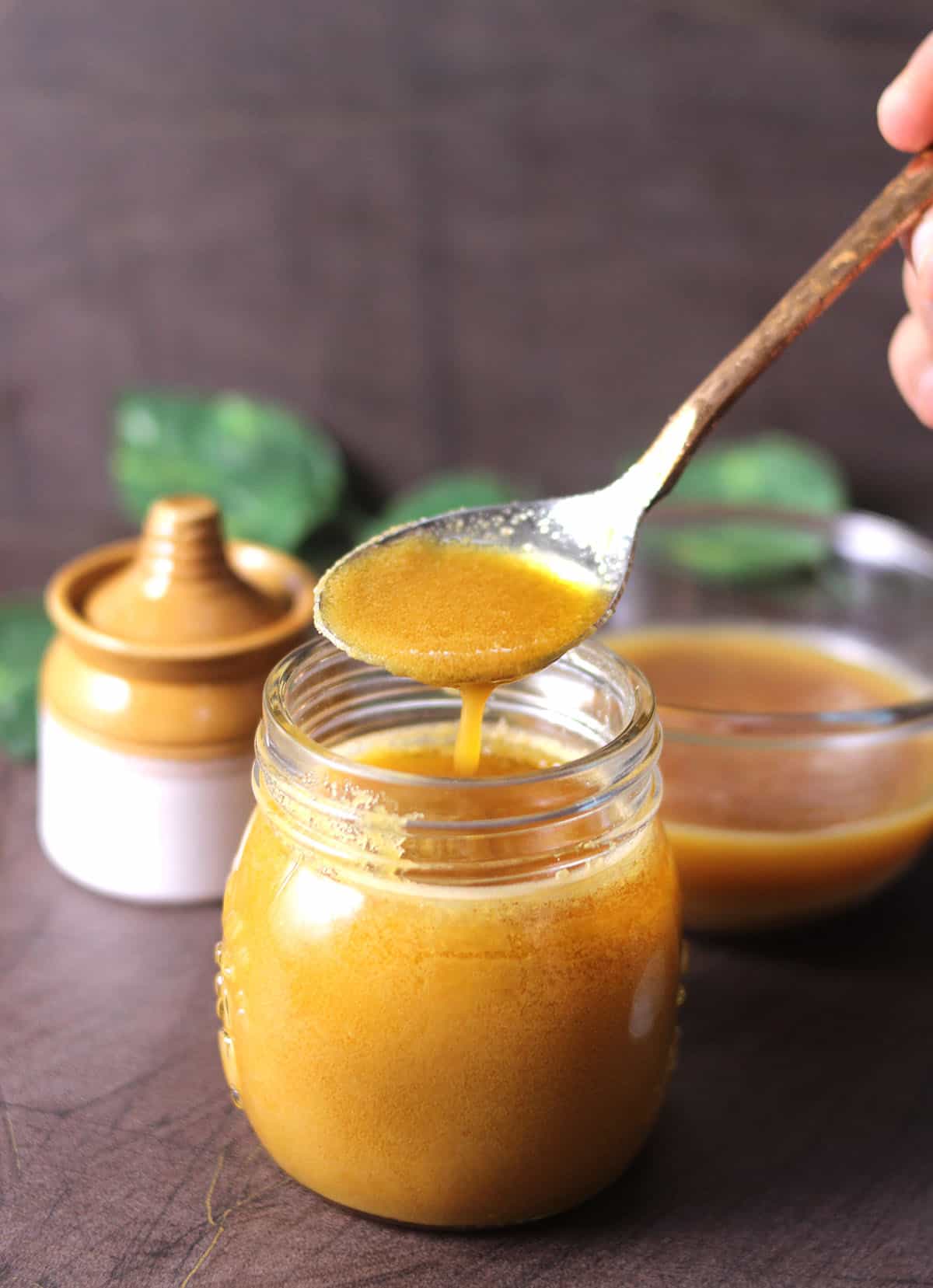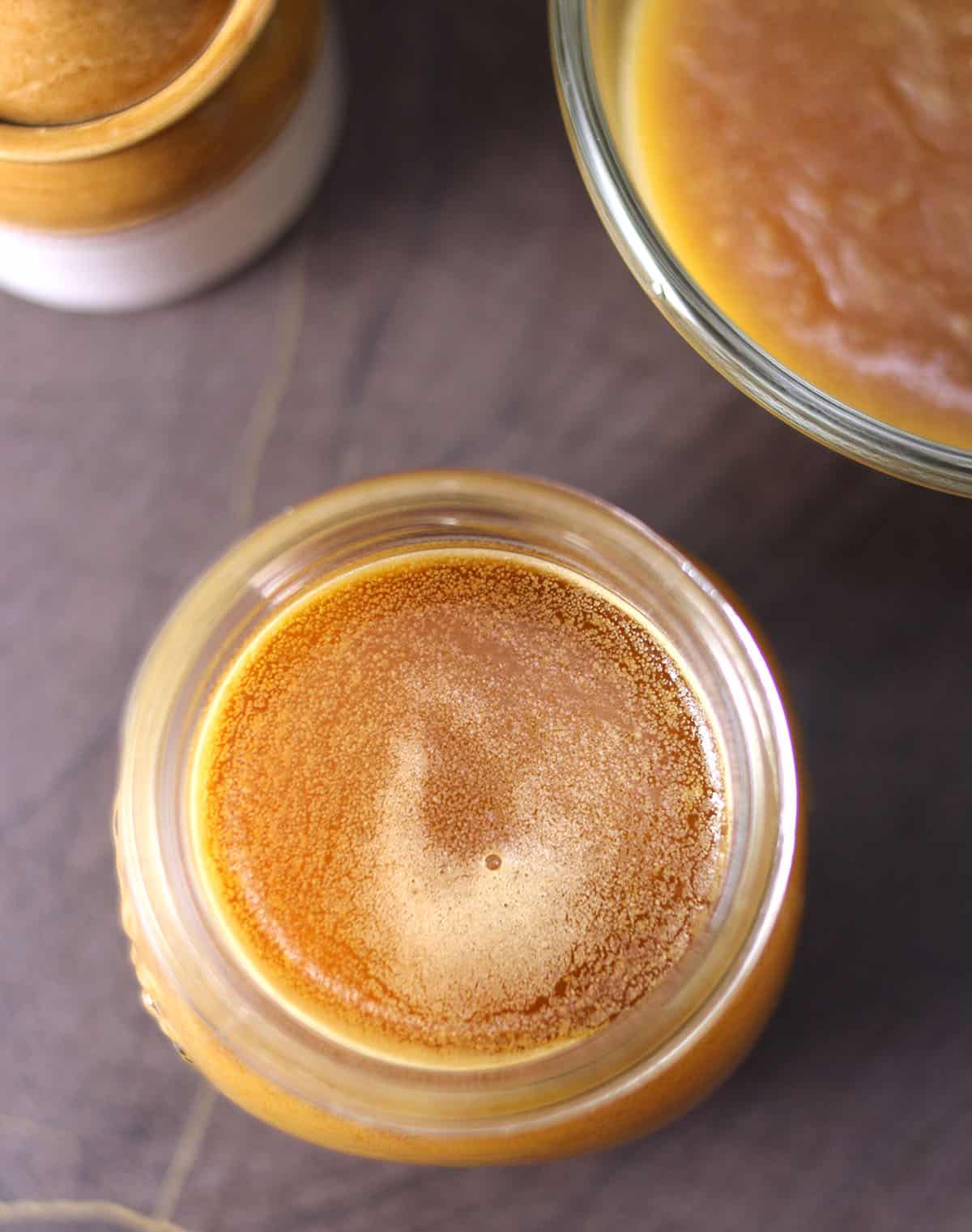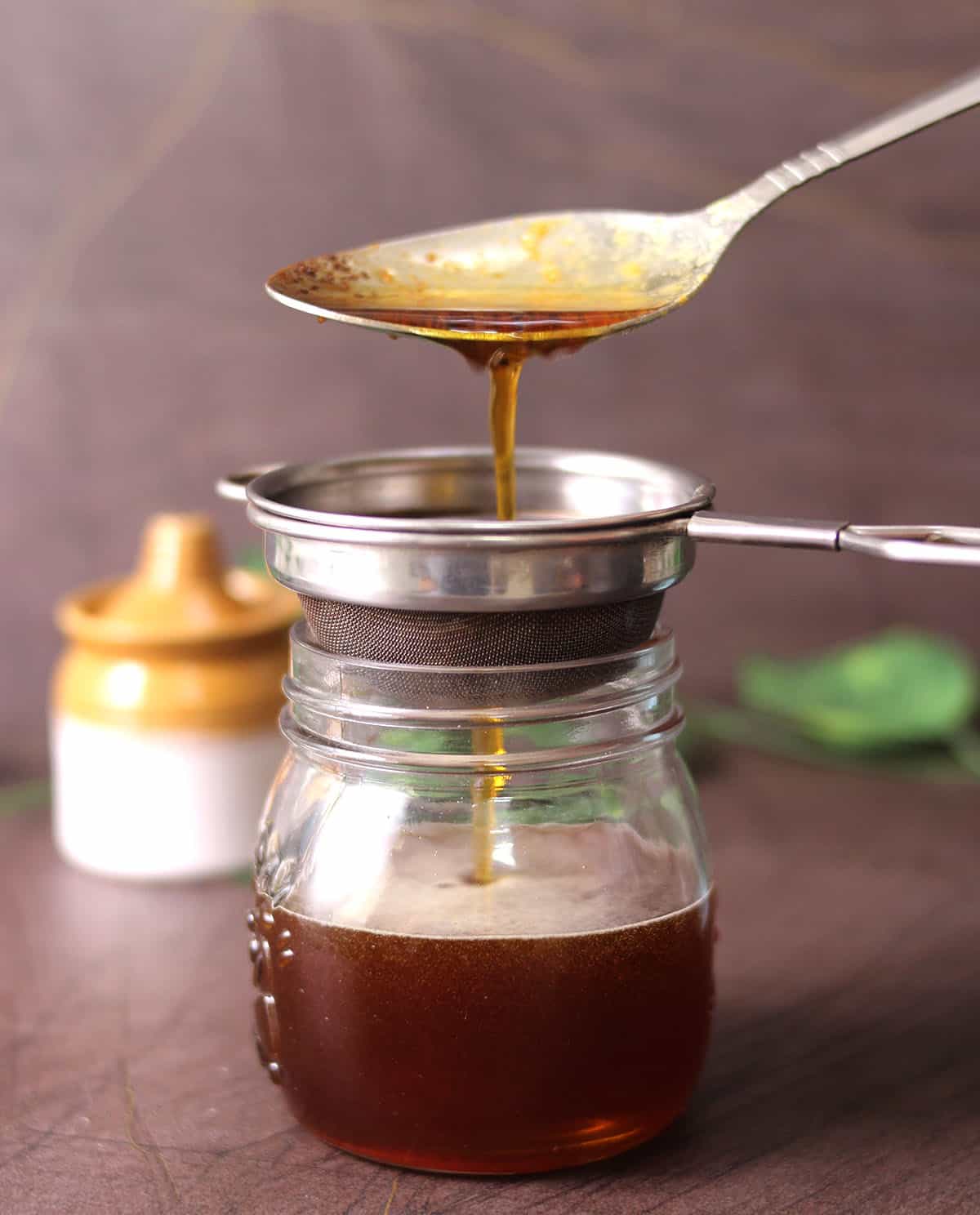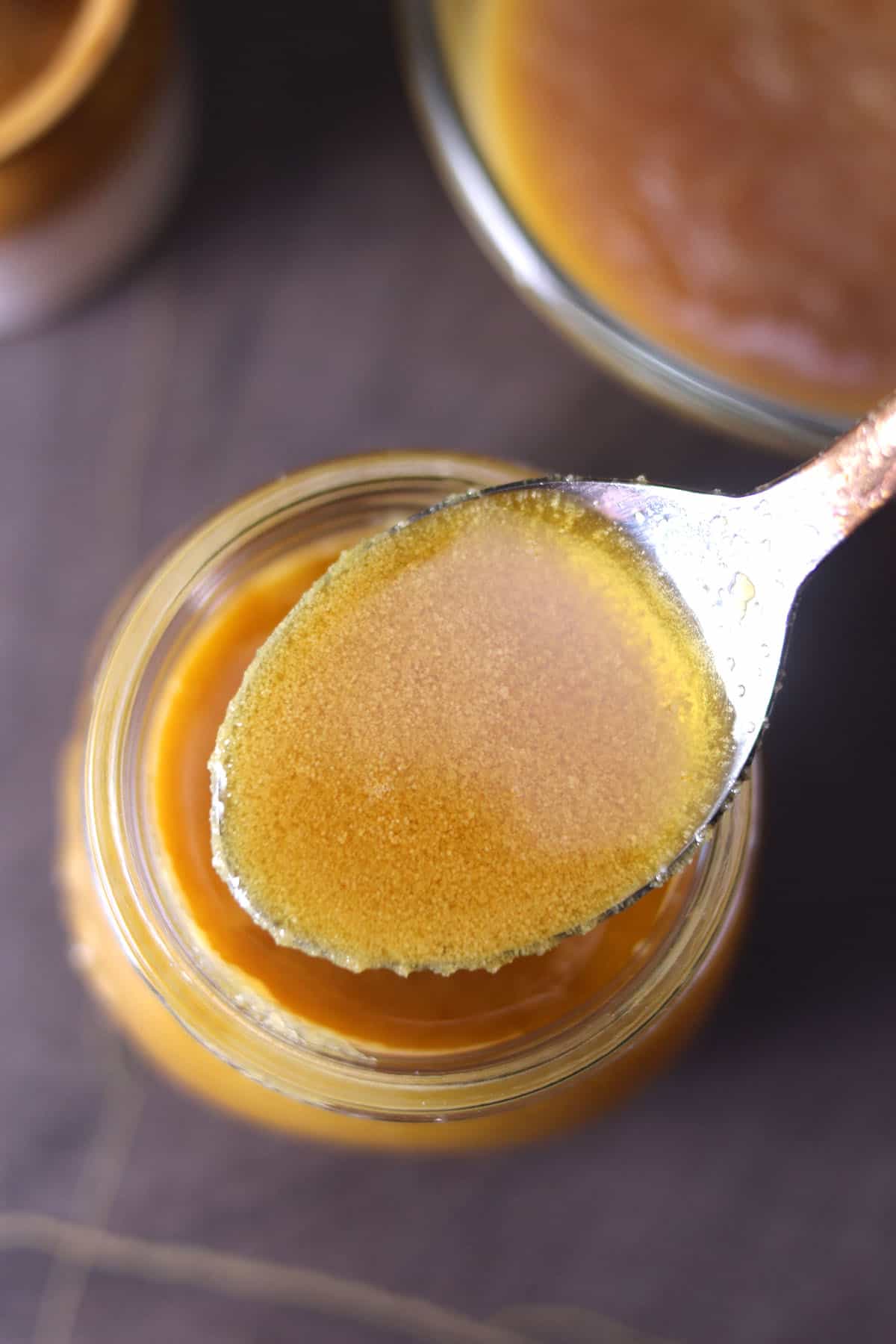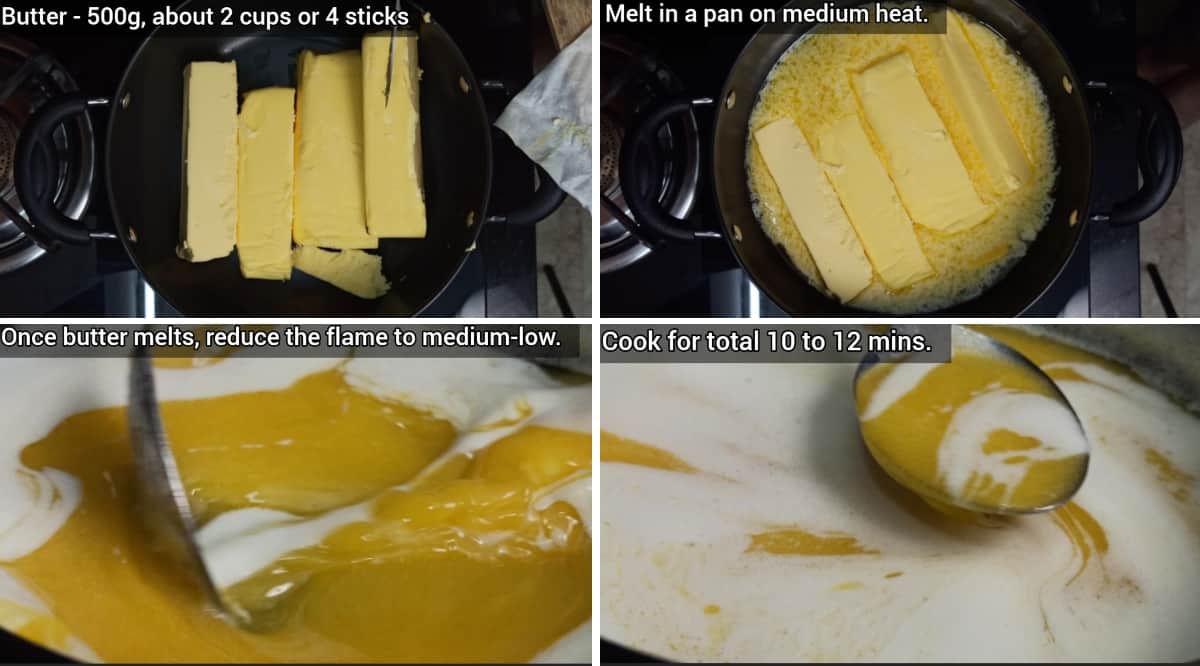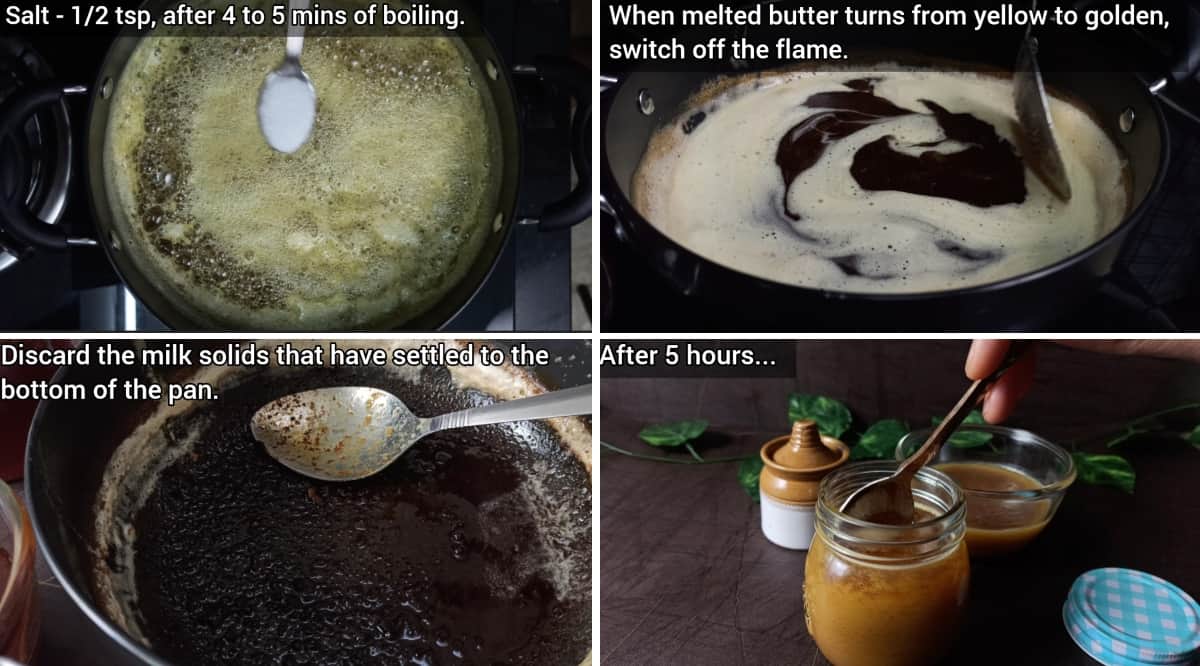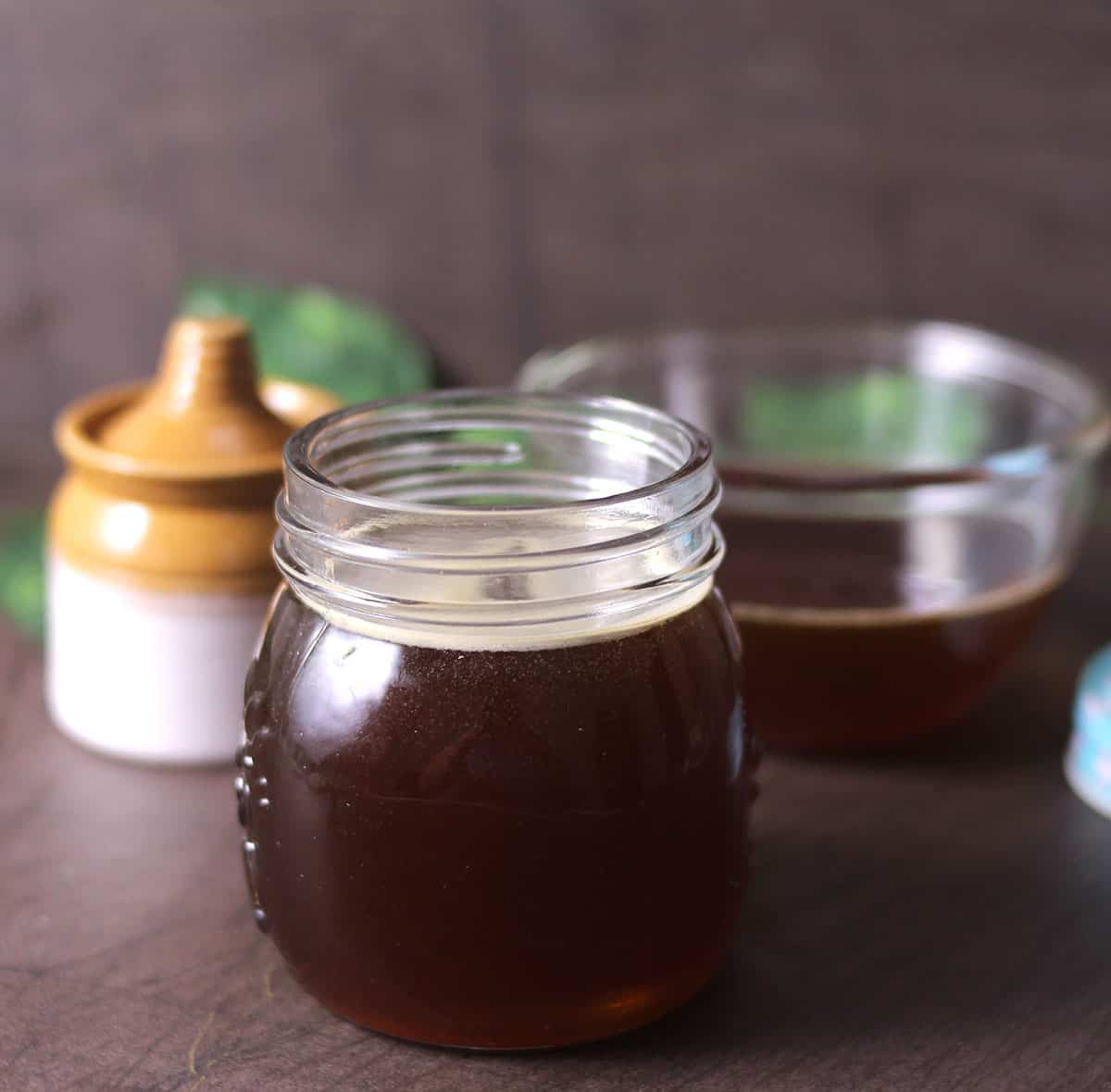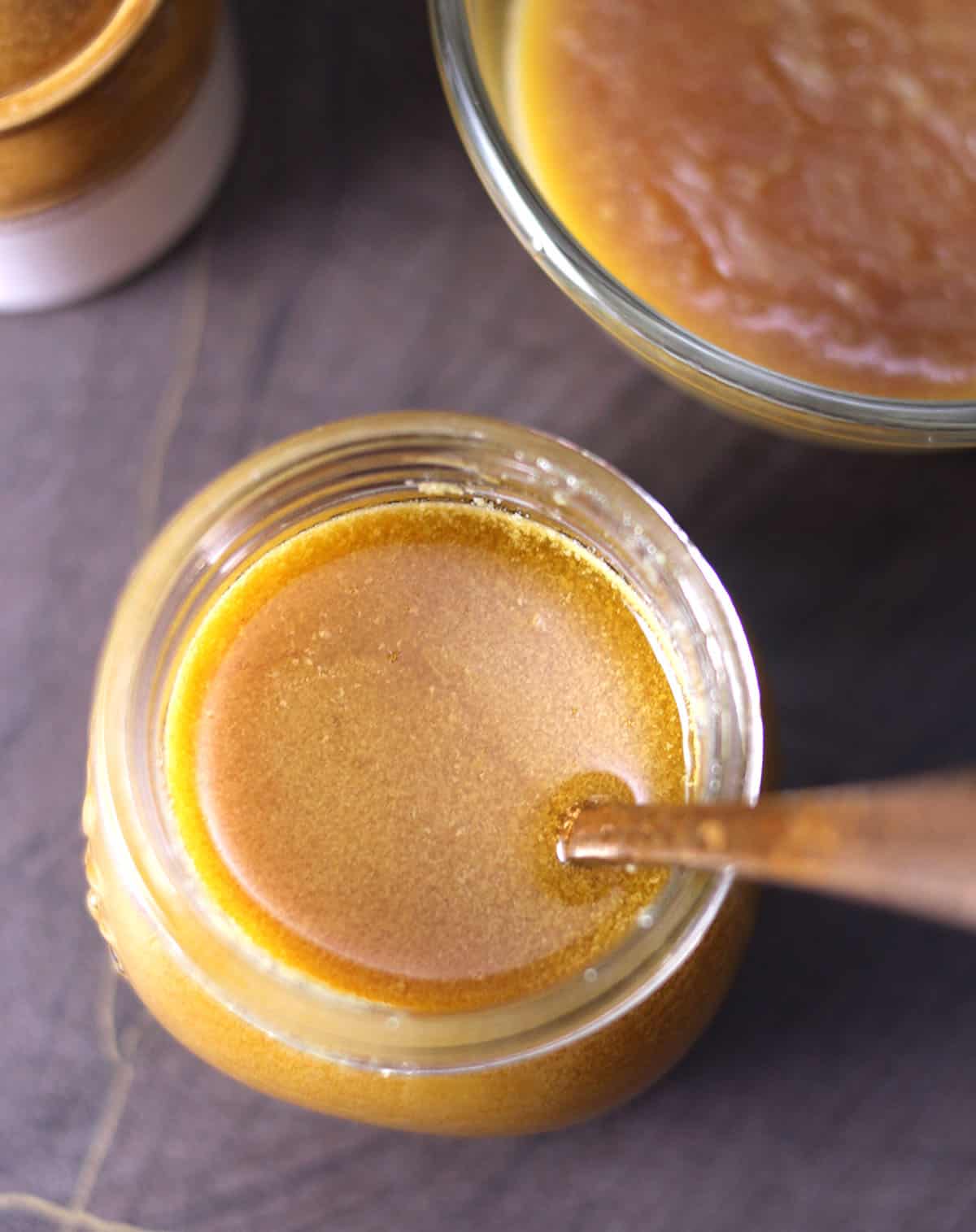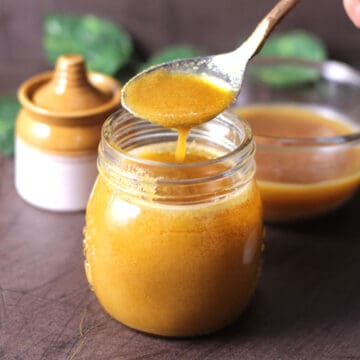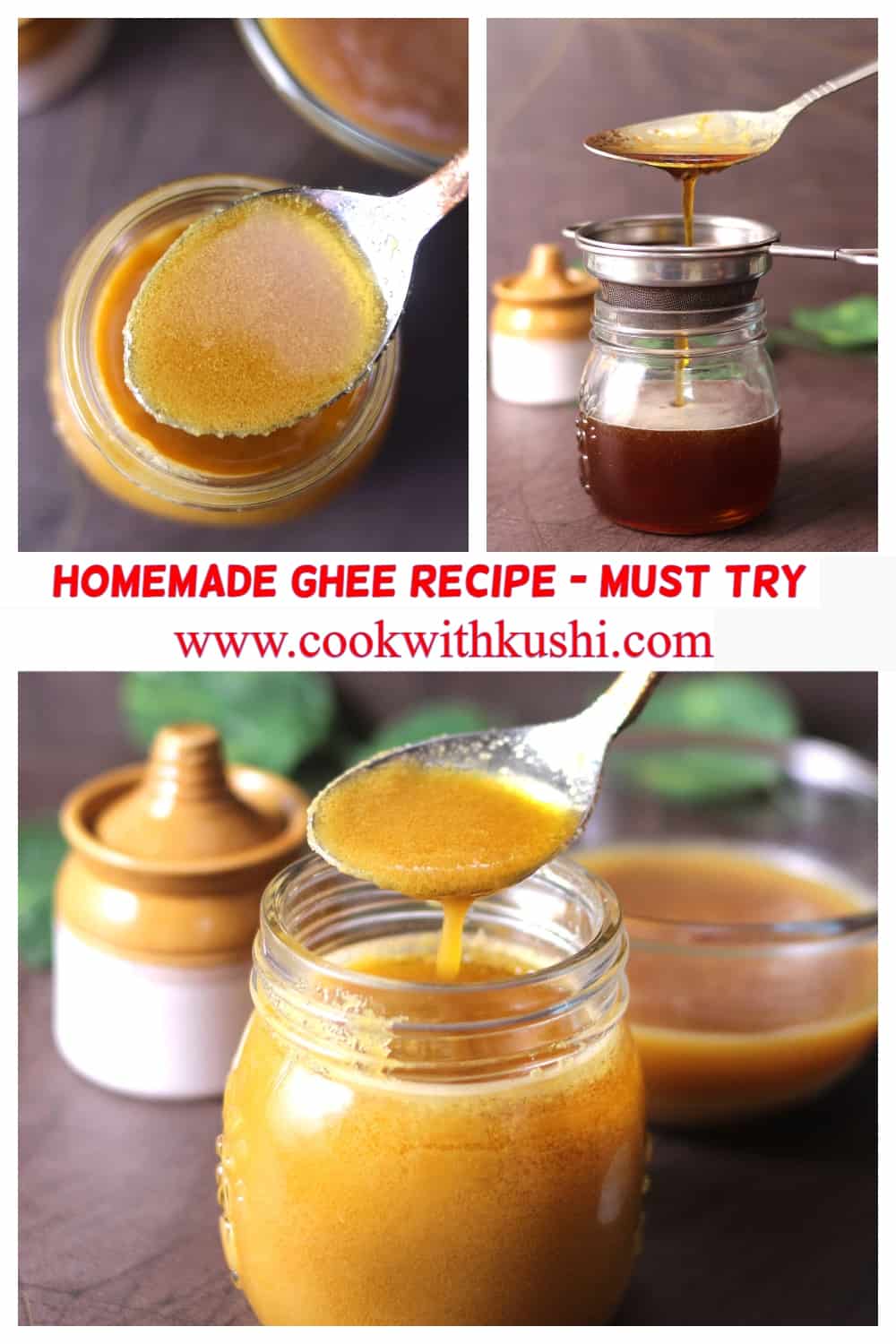What is Ghee?
Ghee is clarified butter made by simmering the butter on low heat until the moisture in the butter evaporates and the milk solids separate from the fat and caramelize, giving a nutty aroma. The caramelized milk fats are then strained off using a fine sieve, muslin cloth, or a tea strainer. What is left at the end is golden liquid fat, and that is called Ghee. Ghee made from cows’ milk is considered satvik, while ghee prepared from buffalos milk is tamasic. So for any homa or havan (the fire rituals) in India during festivals, occasions, and marriages, ghee from cow’s milk is considered the highest offering, symbolizing auspiciousness and positivity.
Ghee benefits
Ghee is a rich source of vitamins, healthy fats, and antioxidants. Eating fatty acids such as ghee helps the body absorb essential vitamins and minerals. It also has a good ratio of omega-3 and omega-6 fatty acids. This fat also helps in reducing harmful cholesterol levels in the body. Ghee is used as a moisturizer and also as a health booster. I sometimes even use it as lip balm, especially during winter. It has anti-inflammatory properties and can be used to treat burning and swelling. Ghee has more monounsaturated fats compared to olive oil. Therefore, when consumed in moderation, it is considered good for the heart.
Why is ghee the best fat for cooking?
I love to eat ghee all by itself but using in recipes enhances the taste of your dish. Ghee can be used to prepare stir-fries, biryanis, sweets, desserts, or baking. The nutty aroma and flavor it imparts to any dish cannot be replicated by any other ingredient. But that is not it. In making ghee, since milk solids are separated from the fat, ghee is considered lactose-free and casein-free.
What is cultured butter?
Traditionally in India, desi ghee is prepared from cultured butter that comes from cultured cream obtained from the milk of grass-fed cows. My mom still follows this old traditional method. No shortcuts. A distinctive advantage of living in the village and taking care of cows. But due to lack of time, patience, and opportunity, I opt for the shortcut of using store-bought unsalted butter to make ghee. Ghee prepared from the shortcut tastes much better than packaged ghee sold at the stores.
What can I make with ghee?
You can use ghee for your daily cooking and baking needs. Oil or butter in most recipes can be substituted with ghee. Some of my favorite recipes for using ghee are:
All Indian sweetsIndian flatbreads like naan, roti, paratha, etc.Bread toastTempering or tadka for dal.I also eat half to 1 teaspoon of ghee daily to take advantage of their health benefits.And for all auspicious occasions and festivals like Diwali, Janmashtami, Navratri, Ganesh Chaturthi, etc., I make all my naivedyam recipes with ghee.My kids like to eat dosa or idli with ghee and sugar.
Ingredients
4 sticks Unsalted butter (approx 500 grams)½ teaspoon Salt (optional)
How to make Ghee at home?
Melt butter in a pan on medium heat. After the butter melts, reduce the flame to medium-low and cook for 8 to 10 minutes. The liquid will start bubbling a lot. Stir it occasionally and continue to cook. Add salt after 4 to 5 minutes of boiling. Adding salt enhances the flavor of the ghee and helps remove any residual moisture. Soon the melted butter changes its color from yellow to a light-brown or golden brown. Switch off the flame. At this point, the milk solids must have settled at the bottom of the pan, and the bubbles would have reduced significantly. Let this cool for some time, say about 10 to 20 minutes. Give it more time to cool if you plan to transfer it to a plastic jar. Place a strainer over a clean glass jar or mason jar and pour the ghee. Straining helps separate the caramelized brown milk solids from the ghee. Cool completely and cover the jar with the lid. Depending on the room temperature, the ghee will solidify and become yellow in 3 to 4 hours.
Pro Tips:
During the initial cooking stages, the melted butter will start to bubble vigorously if the moisture content is high. To prevent it from overflowing from the pan, you can place a laddle across the pan to help break the bubbles.If you are making ghee for the first time, I recommend using a light-colored pan so that you can track the color of melted butter as it cooks and prevents it from overcooking or burning.The ghee continues to cook even after you switch off the flame due to the pan’s residual heat. So avoid overcooking the mixture. It takes less than a minute to go from golden brown (nutty flavor) to black (burnt flavor). Switching off the flame slightly earlier is OK than waiting until it’s too late. Use the following cooking times as a guide. After the butter melts completely, cook for 10 to 12 minutes to reach the golden brown stage. If you cook for over 14 minutes, the ghee will likely be overcooked - developing dark brown color and a burnt flavor.The cooking time I have given is just a guide. It will vary depending on the pan’s thickness, the pan, the width of the pan, the moisture content in the butter, and the flame’s intensity.See that the pot/pan you use to make ghee is large enough. Else the melted butter may spill while bubbling and frothing. Place a laddle across the top of the pan to break up the bubbles and avoid spillage.As the ghee cools down (about 3 to 5 hours), it will solidify to form a yellow or golden-brown mass. You can see the pictures shared.
How to store ghee?
Ghee has a long shelf life; you can keep it in a mason jar or air-tight container for 2 to 3 months. But make sure you use a clean spoon every time you want to use ghee to avoid it from getting contaminated. Ghee made at home from cultured butter lasts for six months if used correctly. Beyond that, it turns rancid. Always keep it in the refrigerator if you are looking for longer shelf life.
Video
Check out our video recipe on making ghee from butter for a better understanding.
Recipe card
For more recent updates, follow me on Pinterest, Instagram, Twitter. Click below to save it on Pinterest
